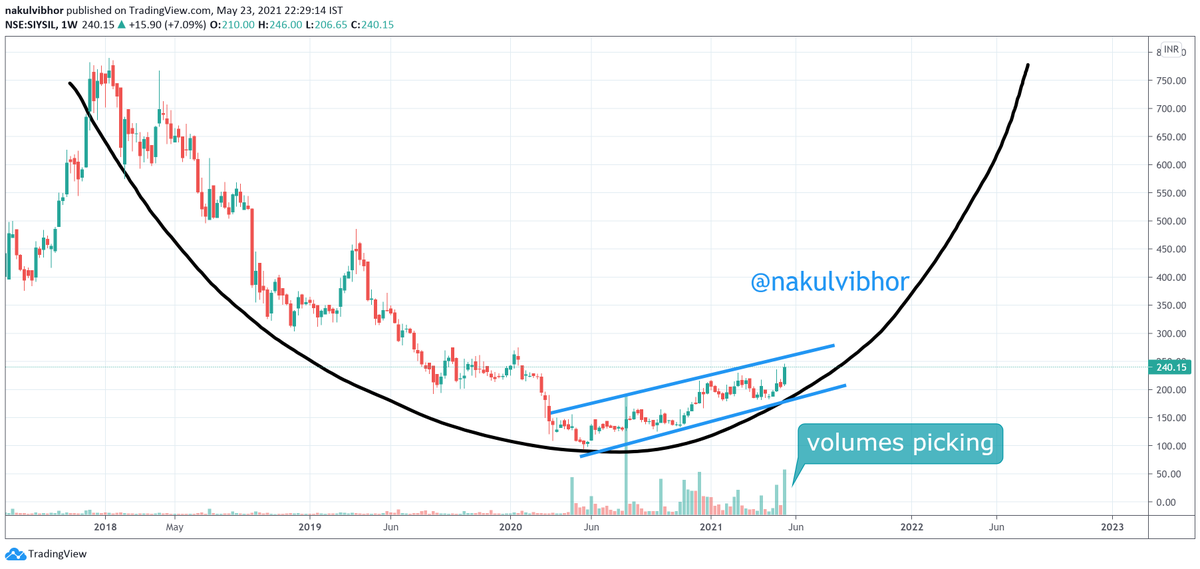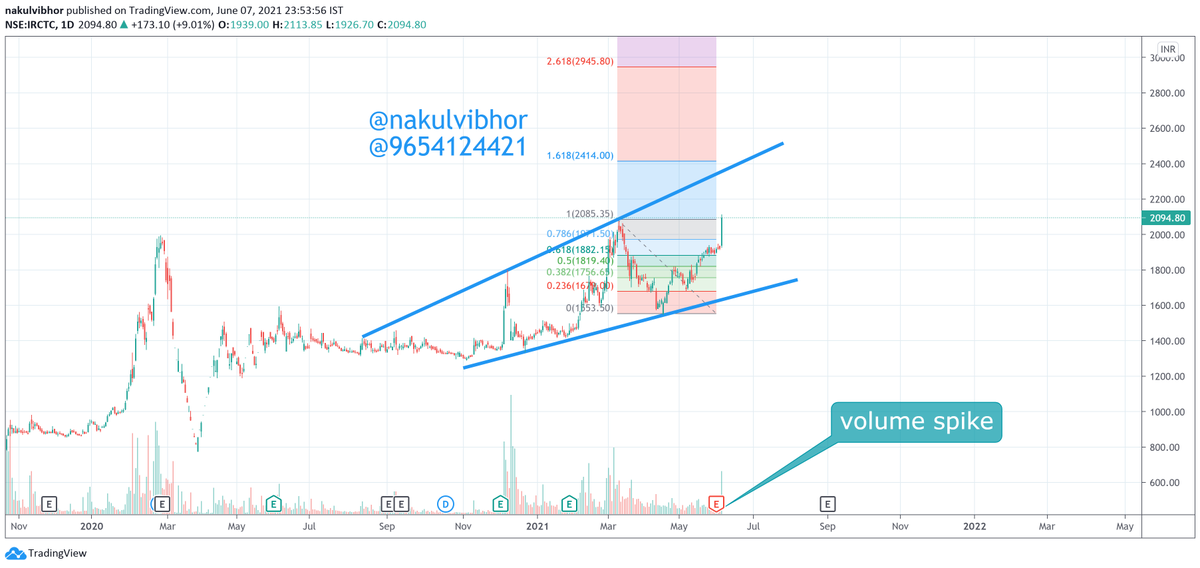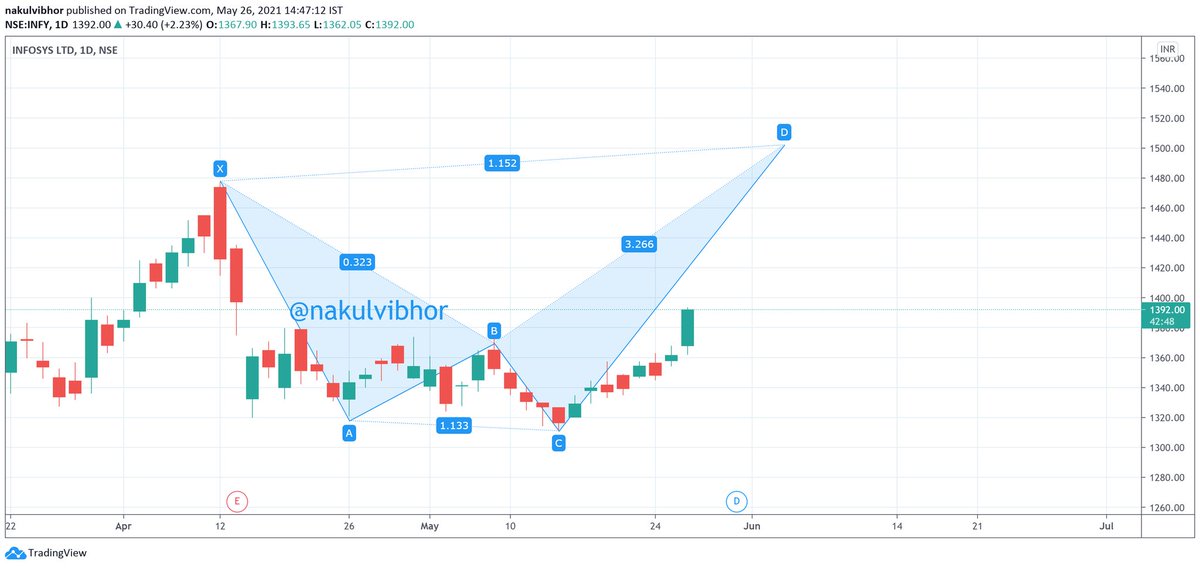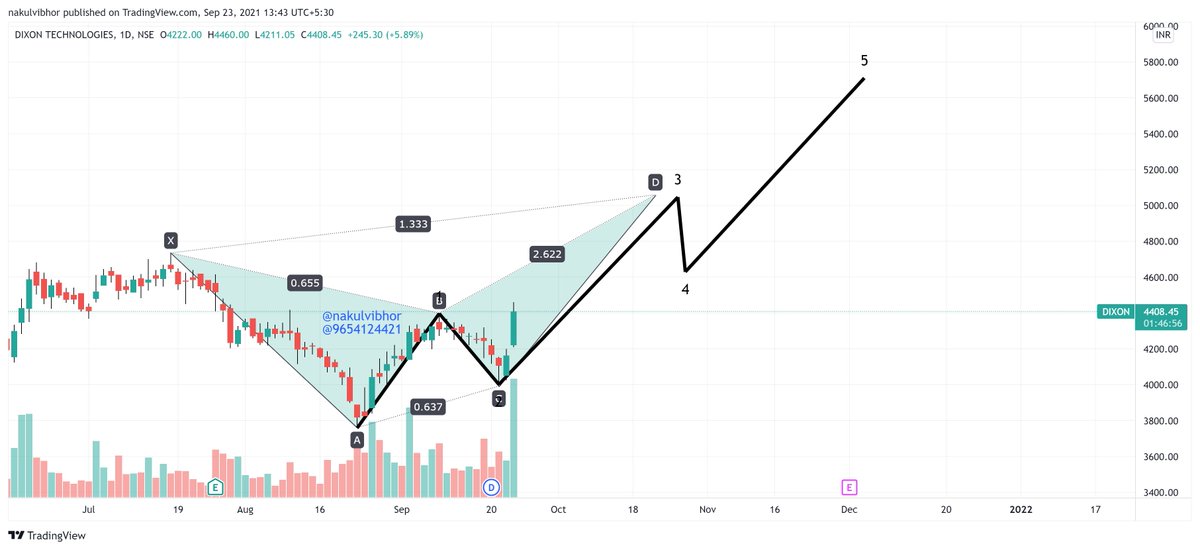Siyaram Silk Mills
making round bottom so ganna take time
making HH-HL at low base
volumes picking up
dec q was good enough , same expected from q4
at cmp 240 , would be looking for 476- 690
huge upside potential left

More from GUPTA JI PRICE ACTION WALE
Irctc - updated chart and follow up
Another fresh breakout making HH-HL
volume spike seen today
Unlock process started which will help irctc to have upcoming good quarter results
Hits 2100+
Keep holding
2300-2500 short term targets
4992 long term target
Monopoly company https://t.co/mlIErwRuP5

Another fresh breakout making HH-HL
volume spike seen today
Unlock process started which will help irctc to have upcoming good quarter results
Hits 2100+
Keep holding
2300-2500 short term targets
4992 long term target
Monopoly company https://t.co/mlIErwRuP5

Irctc
— Vibhor Varshney (@nakulvibhor) June 7, 2021
Another fresh breakout
Unlock process started in Mumbai - Delhi - up and few other states will help irctc to have upcoming good quarter results
Hits 2100+
Keep holding
2300-2500 short term targets
4992 long term target
Monopoly company
One can add now as well
\U0001f44d\U0001f44d https://t.co/O5M3hj8Mhk
KEI industries
Another BO
Another rocket
🔥🔥
This is how you trade with price action
Trade with conviction 👍👍
Hits lifetime high
750+ 🔥
600 to 750+
Booking 50% positions here and holding rest for 790 - 844 with cost as trailing SL
Another BO
Another rocket
🔥🔥
This is how you trade with price action
Trade with conviction 👍👍
Hits lifetime high
750+ 🔥
600 to 750+
Booking 50% positions here and holding rest for 790 - 844 with cost as trailing SL
Kei industries
— Vibhor Varshney (@nakulvibhor) June 16, 2021
Hits first target
Chart posted \u2714\ufe0f
Level posted \u2714\ufe0f\u2714\ufe0f
600 to 700+
Booking 40%positions here
Holding rest for 790-844
\U0001f44d https://t.co/fyAX9xGI2V
Infoedge started to move
70 points up
Keep trailing SL
Those who missed yesterday
Can add now as well
👍🏻
70 points up
Keep trailing SL
Those who missed yesterday
Can add now as well
👍🏻
Positional call
— Vibhor Varshney (@nakulvibhor) June 15, 2021
Holding period 1 month
Buy naukri / infoedge
Both are same stock
Cash or future as per risk capacity
Cmp 4900
Sl 4187
Target 5879 - 6277 - 6788
Good fundamental stock
You May Also Like
@franciscodeasis https://t.co/OuQaBRFPu7
Unfortunately the "This work includes the identification of viral sequences in bat samples, and has resulted in the isolation of three bat SARS-related coronaviruses that are now used as reagents to test therapeutics and vaccines." were BEFORE the

chimeric infectious clone grants were there.https://t.co/DAArwFkz6v is in 2017, Rs4231.
https://t.co/UgXygDjYbW is in 2016, RsSHC014 and RsWIV16.
https://t.co/krO69CsJ94 is in 2013, RsWIV1. notice that this is before the beginning of the project
starting in 2016. Also remember that they told about only 3 isolates/live viruses. RsSHC014 is a live infectious clone that is just as alive as those other "Isolates".
P.D. somehow is able to use funds that he have yet recieved yet, and send results and sequences from late 2019 back in time into 2015,2013 and 2016!
https://t.co/4wC7k1Lh54 Ref 3: Why ALL your pangolin samples were PCR negative? to avoid deep sequencing and accidentally reveal Paguma Larvata and Oryctolagus Cuniculus?
Unfortunately the "This work includes the identification of viral sequences in bat samples, and has resulted in the isolation of three bat SARS-related coronaviruses that are now used as reagents to test therapeutics and vaccines." were BEFORE the

chimeric infectious clone grants were there.https://t.co/DAArwFkz6v is in 2017, Rs4231.
https://t.co/UgXygDjYbW is in 2016, RsSHC014 and RsWIV16.
https://t.co/krO69CsJ94 is in 2013, RsWIV1. notice that this is before the beginning of the project
starting in 2016. Also remember that they told about only 3 isolates/live viruses. RsSHC014 is a live infectious clone that is just as alive as those other "Isolates".
P.D. somehow is able to use funds that he have yet recieved yet, and send results and sequences from late 2019 back in time into 2015,2013 and 2016!
https://t.co/4wC7k1Lh54 Ref 3: Why ALL your pangolin samples were PCR negative? to avoid deep sequencing and accidentally reveal Paguma Larvata and Oryctolagus Cuniculus?
https://t.co/6cRR2B3jBE
Viruses and other pathogens are often studied as stand-alone entities, despite that, in nature, they mostly live in multispecies associations called biofilms—both externally and within the host.
https://t.co/FBfXhUrH5d

Microorganisms in biofilms are enclosed by an extracellular matrix that confers protection and improves survival. Previous studies have shown that viruses can secondarily colonize preexisting biofilms, and viral biofilms have also been described.

...we raise the perspective that CoVs can persistently infect bats due to their association with biofilm structures. This phenomenon potentially provides an optimal environment for nonpathogenic & well-adapted viruses to interact with the host, as well as for viral recombination.

Biofilms can also enhance virion viability in extracellular environments, such as on fomites and in aquatic sediments, allowing viral persistence and dissemination.

Viruses and other pathogens are often studied as stand-alone entities, despite that, in nature, they mostly live in multispecies associations called biofilms—both externally and within the host.
https://t.co/FBfXhUrH5d

Microorganisms in biofilms are enclosed by an extracellular matrix that confers protection and improves survival. Previous studies have shown that viruses can secondarily colonize preexisting biofilms, and viral biofilms have also been described.

...we raise the perspective that CoVs can persistently infect bats due to their association with biofilm structures. This phenomenon potentially provides an optimal environment for nonpathogenic & well-adapted viruses to interact with the host, as well as for viral recombination.

Biofilms can also enhance virion viability in extracellular environments, such as on fomites and in aquatic sediments, allowing viral persistence and dissemination.













